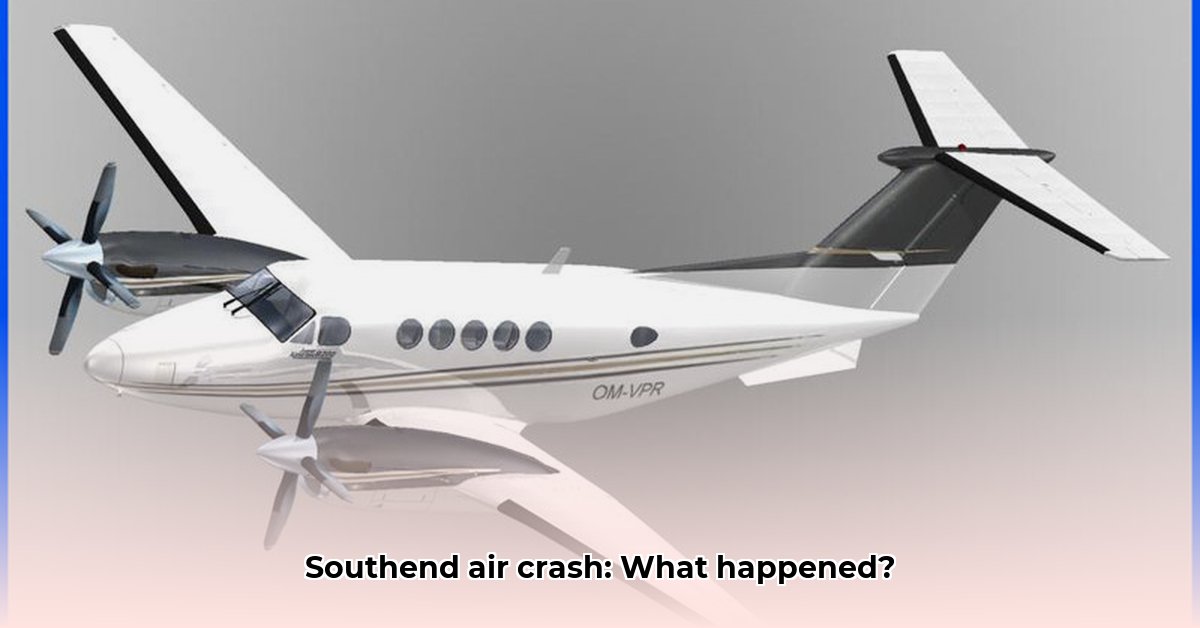
Beechcraft Super King Air: Unravelling the Southend Tragedy
A Beechcraft Super King Air B200 (a twin-turboprop aircraft frequently used for air ambulance services) crashed at London Southend Airport on 14 July 2025, resulting in the tragic deaths of all four people on board: the pilot, co-pilot, and two medical personnel. The aircraft, registered PH-ZAZ and operated by Zeuschaviation, had departed from Athens, Greece and stopped in Pula, Croatia before the fatal incident. The impact caused an immediate and intense fire. This incident has jolted the South African and international aviation communities, prompting urgent calls for a comprehensive investigation and potential improvements to flight safety standards. How could such a seemingly routine medical transport flight end in such a devastating catastrophe?
The Crash: A Rapid Descent
Eyewitness accounts suggest a rapid and uncontrolled descent after takeoff from runway 05. The aircraft reportedly entered a steep dive to the left, impacting the ground with significant force. The ensuing fire spread rapidly, hindering immediate rescue efforts. The speed and severity of the crash has left investigators with a substantial amount of work ahead of them to piece together the details of this very sad and unfortunate event.
Investigating the Disaster: The Search for Answers
The Air Accidents Investigation Branch (AAIB) is leading the investigation, supported by Essex Police. The investigation is focusing on several key areas, including thorough examination of the flight data recorder (FDR) and cockpit voice recorder (CVR) – the "black boxes" that record flight data and cockpit conversations – which provides critical data to understand factors affecting airworthiness and crew performance directly before the accident. The team also are collecting witness statements, reviewing the aircraft's maintenance records and flight plans, and analysing various weather data related to the flight area and the time of the accident. Were there any mechanical issues affecting this aircraft? What were the atmospheric conditions, and what role could they have played? These are all questions that will likely need to be answered along the way.
The Big Questions: Potential Causes Under Scrutiny
While the investigation is ongoing, and speculation should be avoided, several aspects are under close scrutiny. These include: potential pilot error, mechanical failure (engine or other systems), and aspects of the aircraft's configuration for this specific medical transport flight – including weight distribution and the presence of any additional medical equipment that could have affected the flight stability.
Did the aircraft’s weight distribution, perhaps due to the medical equipment on board, contribute to the crash? This is a serious question which will need to be answered through the detailed analysis of the weight and balance of the aircraft at the time of departure.
The Human Toll: A Deeply Felt Loss
The Southend crash serves as a stark reminder of the human cost of aviation accidents. The loss of four lives has had a profound impact on families, colleagues, and the wider aviation industry. The lives of the victims, as well as the immense pain of those left behind, serve as a tragic counterpoint to the need for constant vigilance in maintaining exceptional safety standards within the industry.
Looking Ahead: Safety Improvements and Future Implications
The results of the AAIB investigation will likely lead to recommendations for improving safety standards, especially in medical transport aviation. These could include adjustments to pilot training, enhanced maintenance protocols, refined operational procedures for medical flights, and potential revisions to regulatory frameworks. The international aviation community is watching closely, as any lessons learned in this tragedy could influence aviation safety for years to come. This is a critically important aspect of what this disaster has brought to light.
Have sufficient resources been allocated to pilot training for high-stress medical transport flights? The answer to this question will be a key indicator of the areas where regulatory improvements may be required in the near future.
Who's Involved: A Multi-Agency Investigation
The investigation involves a collaborative effort across several key stakeholders including:
- AAIB: Leading the investigation and responsible for formulating safety recommendations.
- Essex Police: Supporting the investigation, managing the recovery of remains, and supporting the families of the victims.
- Zeuschaviation: Collaborating with the investigation and reviewing their own operational practices.
- Civil Aviation Authority (CAA): Overseeing the investigation and reviewing aviation regulations.
- Southend Airport: Assisting in the investigation and reviewing their emergency response protocols.
The Pursuit of Answers: A Continuing Process
The AAIB investigation is likely to be lengthy and thorough, requiring meticulous examination of every detail to reach sound conclusions. The findings will be crucial in determining the cause of the accident, while ultimately forming the basis for future safety improvements. The aim is to prevent similar tragedies from occurring again. This process will take time. The aviation industry’s commitment to learning from this tragedy will be a defining factor in improving safety, and prevent further loss of life.